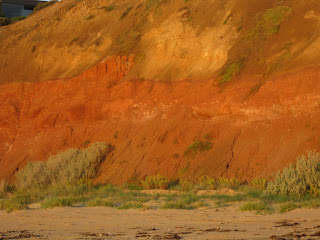

 April is the month that marks the end of the mutton bird breeding cycle. On April 18 the adult birds leave Phillip Island to fly on their migration flight to the Bering Sea, where they'll spend time feasting on krill before making a return flight back to Phillip Island.
April is the month that marks the end of the mutton bird breeding cycle. On April 18 the adult birds leave Phillip Island to fly on their migration flight to the Bering Sea, where they'll spend time feasting on krill before making a return flight back to Phillip Island.
The mutton bird chicks are left behind to replace their fluffy grey down with adult plumage, and then learn to fly. During the time that the young birds are learning to fly, people on the island are asked to take special care, especially on the roads at night. The birds are attracted to and then become disoriented by street lights and the San Remo bridge lights. Therefore, the lights on the bridge are turned off during the peak of the young bird's departure.
Phillip Island Nature Park staff and a team of volunteers patrol areas where the birds crash-land on roads, particularly around Surf Beach and near the Penguin Parade. Many hundreds of birds have been saved from roads as they attempt to fly. At the end of April the young birds depart, following the same migration flight as their parents, to Alaska and the Bering Sea.
17 million mutton birds (Short-tailed shearwaters) leave their breeding islands in southern Australia every April, to make an amazing migration round trip of around 25,000 km.
Every April, we too depart on our migration flight to Mitchell, in outback Queensland.

 Only one week to go and we leave Phillip Island, heading for Mitchell in outback Queensland -- our home for the winter and spring.
Only one week to go and we leave Phillip Island, heading for Mitchell in outback Queensland -- our home for the winter and spring.
I'm finding myself feeling apprehensive about what we'll find on our return. In February, flood waters of the Maranoa River flooded our home, resulting in chest-height water throughout. Over 80 per cent of homes in Mitchell were flooded, consequently the whole town has been traumatised.
What will our home and three quarter acre block look like? When we left in November, everything was clean, tidy and attractive -- now? When we left, the community of Mitchell was strong, friendly and optimistic -- now?
Will we build another home in a flood-free position, or built one on stilts, by the river? There have been too many altered plans made over the past weeks. My mind is overwhelmed!
Therefore, I've had to say, Enough, just go with the flow, live in the moment, make no more decisions until we've lived in Mitchell for at least the next few months.
Another question, Can we live in a caravan with two big dogs and a cat -- long-term?
Meantime, we are packing up our Phillip Island home, and loading the Ute with everything we need to equip the caravan that we'll collect in Seymour on our way north. It would have been much easier to organise and pack the caravan here; however, it seemed sensible not to tow such a large caravan through the city of Melbourne, two times.
Our trip north will take about one week. I've decided not to write blogs while we travel but will resume as soon as we reach Mitchell. From that point onwards, all will be revealed!
PS
There have been a few dead seal pups on the beach this week. Fortunately our dogs don't roll on dead things!




















































